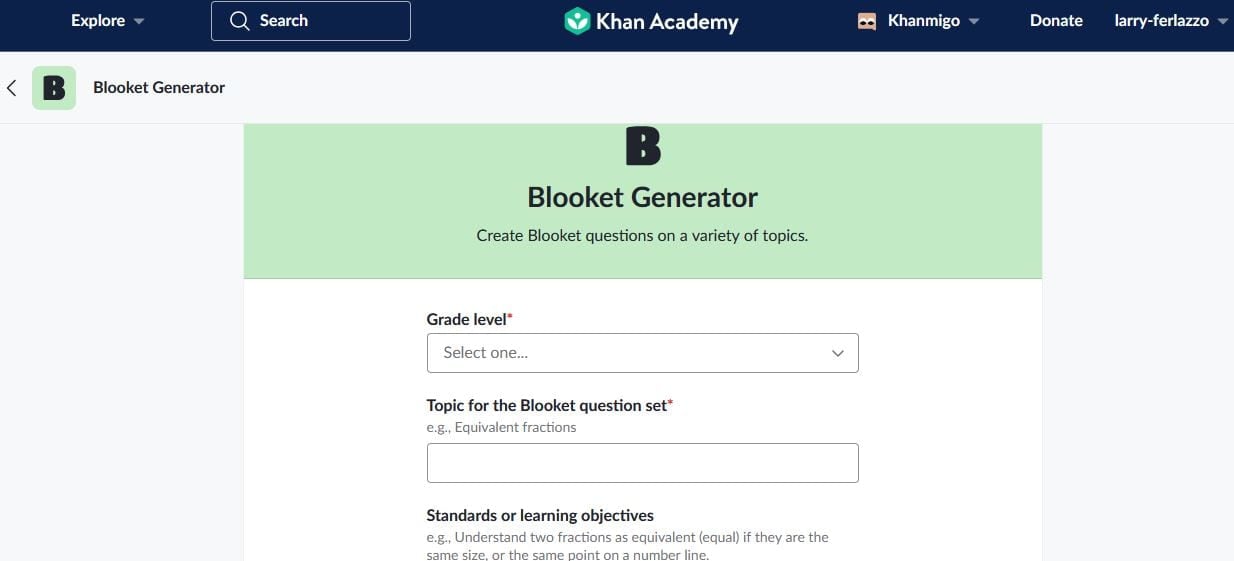Reading Time: 5 minutes
The following is part two of a two-part series, “Digital Nexus in Higher Education.”
AI and higher ed: an intersection
Educators’ concerns about maintaining classroom academic integrity in the face of technological advancements are very real. They must grapple with the challenge of detecting and preventing cheating, while still embracing the potential benefits that technology brings to the educational experience.
By examining technology trends in higher education, we can understand how the digital landscape presents both challenges and opportunities for instructors. Faculty concerns about AI cheating tools have arisen due to the rapid evolution of digital media, open educational resources, and assessment technologies.
It’s important to discover how AI tools can be leveraged, not only for cheating but also for enhanced teaching, learning, and assessment processes. AI tools can help educators mitigate cheating by allowing them to implement secure assessment protocols, fostering a culture of academic honesty.
Part two of “Digital Nexus in Higher Education” aims to demystify the complex relationship between technology and academia, offering practical guidance for educators to navigate this digital nexus while upholding academic standards and organizational effectiveness.
Common instructor concerns
Let’s go through some of the top concerns on the minds of today’s educators surrounding AI and its uses in the classroom.
- What is artificial intelligence?
- Why is AI impacting our students?
- How can we implement AI policy to prevent students from plagiarizing or cheating?
- Why do I have to deal with AI?
- I don’t want anything to do with AI — how can I avoid it at all costs?
- I want to use AI — how do I understand it?
- How can my institution determine their use of AI?
- How can I prevent the use of ChatGPT in my course?
- How do I know if a student used ChatGPT?
- How can I teach an AI course in Higher Education?
- What is artificial intelligence?
Artificial intelligence can be defined as computers that can mimic human intelligence. It can be also defined in terms of what it does for us.
- Why is AI impacting our students?
Due to technology evolving faster than we can accept, there is a need to adapt to change. AI’s lasting impact on students has yet to be determined, but according to Cengage’s recent report, 63% of instructors believe AI can improve student engagement.
- How can we implement AI policy to prevent students from plagiarizing or cheating?
We can learn about what AI is, and how AI tools and resources are used. Then, we can implement a policy that applies rules to AI cheating tools and resources. For example, AI content should not be deemed a student’s original work in the same way content that is copied and pasted from a textbook or online article is not their original work.
- Why do I have to deal with AI?
Higher ed institutions are often the first environment where students develop familiarity with artificial intelligence. And since it’s not going anywhere, we’ll (faculty, students, and administrators) need to learn how to deal with it effectively in our working capacity.
- I don’t want anything to do with AI — how can I avoid it at all costs?
Avoiding opportunities to help our students successfully learn something new may come back to haunt us later. As educators, our goal should be to help create quality higher ed institutions that provide communities and beyond with access to affordable associate and baccalaureate degree programs, career certificates, and workforce employment programs. These programs should be delivered to students through various modalities and innovative technologies. It is our duty to ensure we are providing innovative technologies, like artificial intelligence.
- I want to use AI — how do I understand it?
Get involved in upcoming training sessions, conferences, events, and professional development opportunities to learn more about how to utilize it in your course. There are great podcasts and blogs devoted to the topic. You can also join your institution’s computer science events to stay up to date on the latest news about AI. There are also AI online learning platforms such as Intel or Udemy that provide course tutorials to start you off.
- How can my institution determine their use of AI?
To determine the use of AI, we must understand the needs of our faculty and students. For example, an English course may not use AI, while a math course may. Therefore, we can determine that the discretion to use AI should lie with the instructor. This information should then be passed on to those who implement policies and procedures at your institution.
- How can I prevent the use of ChatGPT in my course?
Regardless of our policies, we all know students will still use plagiarism or cheating software. Therefore, the best way to prevent the use of this kind of tool is to test it out yourself. If you’re an instructor who has this concern, run your course content through ChatGPT to see what results it provides. This helps you understand what types of responses are being generated so you can compare to your students’ submissions. Other solutions include changing course assignments to incorporate critical thinking responses or video responses. Shifting your online course environment to in-class or hybrid is also a great solution.
- How do I know if a student used ChatGPT?
As stated previously, the best way to determine if students are using AI tools to cheat is to run your course content through ChatGPT to see what gets generated. Since the rise of ChatGPT, students are more likely to be suspected of cheating, which can be stressful for those who are honest students. Therefore, it’s important that instructors go above and beyond to ensure course content is diverse, original (not from the textbook) and has been reviewed for possible cheating attempts in the past. Doing this will ensure you are upholding the vision of being the leading choice for higher education.
- How can I teach an AI course in Higher Education?
Companies are partnering to provide registered training for educators. For example, Data B.I.T.S. LLC has partnered with Intel. Faculty members are using this company to become certified as Lead Facilitators through Intel’s ®AI for Workforce Program. Therefore, faculty members can receive the training that’s needed for them to enhance their skillset and teach the curriculum Intel provides to Data B.I.T.S., LLC.
Preventing cheating
Preventing students from using ChatGPT or similar tools to plagiarize or cheat on homework assignments requires a combination of technological and pedagogical strategies. Remember, maintaining academic integrity is not just about identifying signs of cheating, but also about fostering a culture of honest learning. Engage with your students and discuss the importance of academic integrity, creating an environment where they feel motivated to do their best work. Here are five tips to help prevent cheating in your classroom:
- Clearly communicate academic integrity policies:
Clearly outline your expectations regarding academic honesty in your course syllabus. Emphasize the consequences of plagiarism and cheating and explain why these behaviors are detrimental to the learning process. Reinforce the importance of original work and proper citation practices.
- Design thoughtful assignments:
Create assignments that require students to exercise critical thinking skills, personal reflection, or concept applications rather than simple regurgitation of information. Assignments that prompt students to apply their understanding in unique ways make it more difficult for them to find ready-made answers from external sources, like ChatGPT.
- Use varied assessment methods:
Diversify your assessment methods to include a mix of quizzes, exams, presentations, and projects. A variety of assessment types makes it harder for students to rely solely on external sources for answers. For example, in-class exams with time constraints may limit the use of external assistance.
- Leverage technology to detect plagiarism:
Utilize plagiarism detection tools to scan submitted work for potential instances of plagiarism. Tools like Turnitin, Grammarly, or other similar platforms can help identify content that matches existing online sources. Clearly communicate to students that you are using these tools, which can act as a future deterrent.
- Provide opportunities for feedback and revision:
Encourage a learning environment where mistakes are viewed as opportunities for improvement. Offer formative assessments, drafts, and opportunities for students to receive feedback before final submissions. By providing feedback throughout the assignment process, you can guide students towards a better understanding of the material, making it less tempting for them to resort to shortcuts.
Written by Shakia Riggins, MSIT
Read part one, “Digital Nexus in Higher Education: Artificial Intelligence Impact on Academic Integrity” to get the full scope on this topic.
The post Part Two: Digital Nexus in Higher Education: Artificial Intelligence Impact on Today’s Educators appeared first on The Cengage Blog.
Reading Time: 5 minutes The following is part two of a two-part series, “Digital Nexus in Higher Education.” AI and higher ed: an intersection Educators’ concerns about maintaining classroom academic integrity in the face of technological advancements are very real. They must grapple with the challenge of detecting and preventing cheating, while still embracing the potential benefits that […]
Read More…
The post Part Two: Digital Nexus in Higher Education: Artificial Intelligence Impact on Today’s Educators appeared first on The Cengage Blog. Higher Ed Trends, Artificial Intelligence The Cengage Blog








